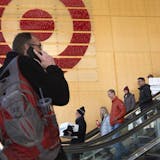Heightened concern about youth concussions spurred legislation in Minnesota and national guidelines governing when injured athletes can safely return to sports, but many parents and educators remain confused about when students' brains have healed enough that they can safely return to class.
The American Academy of Pediatrics weighed in on Sunday, with new guidance called "Returning to Learning," in an effort to keep concussed kids from being rushed back to class in ways that could prolong their brain injuries and cause their grades to plummet.
But the nation's foremost pediatrics organization also acknowledged that there is no one way to recover from a concussion, and urged parents, doctors and educators to work together in easing students back to school.
"One concussion may not act the same as the other one," said Dr. Mark Halstead, a St. Louis pediatrician who cowrote the guidelines. "Some students might have trouble with noises or bright lights at lunch. Others might have trouble in their math classes but be fine in all of the other ones."
For Hannah Sipe, a junior at Big Lake High School, it was a little of everything — the lights, the noise, the crowded hallways, and the taxing work of applying a healing brain to deep thought.
Back in the fall of 2011, Hannah tried to return to class after suffering four concussions in soccer and basketball the prior school year. Her parents figured the honors student could resume a full class load. She was outwardly healthy, so school officials didn't see the need to provide additional support. A doctor even suggested that lingering symptoms at that point might just be psychological.
But two weeks into her freshman year, Hannah's headaches and exhaustion grew so severe that she was hospitalized for four days.
"I don't know if I passed out or something that made them take me to the hospital, or if it was just pain," said Hannah, who is now 16.



